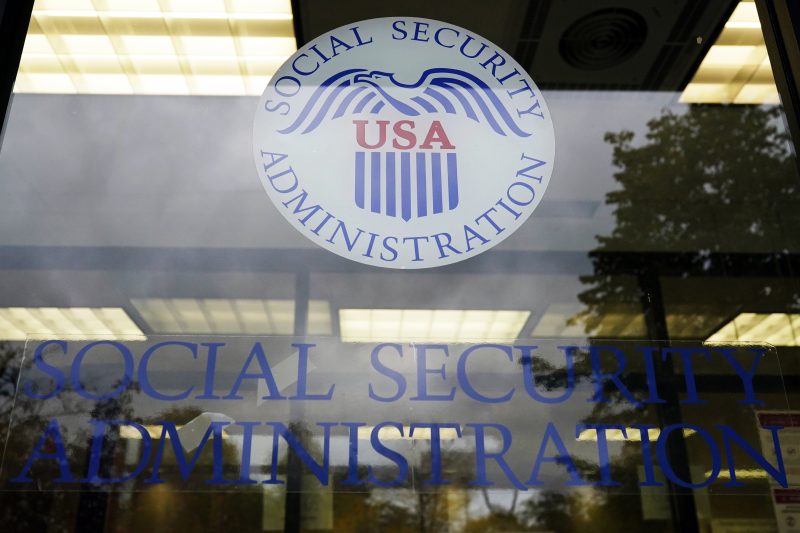The Social Security Administration’s already faltering services will further erode this year despite a $785 million boost to its budget, the agency’s acting head has told lawmakers.
In a letter sent Feb. 10 to leaders of the House and Senate appropriations committees, acting Social Security commissioner Kilolo Kijakazi said she expects already significant delays in disability benefits claims and phone assistance to worsen in 2023.
Although the extra funding Congress added in December to the agency’s $13.3 billion budget aimed to ease those problems by increasing staffing to improve phone operations and reduce record backlogs in the disability system, Kijakazi said it will take significant time to see improvements.
While the extra funding “will allow us to maintain essential services, improve staffing, and continue working through backlogs,” Kijakazi said in the letter, “some performance measures will show improvement in [fiscal] 2023, while others may show temporary degradation.” She cited employee losses across the agency during the coronavirus pandemic that have weakened service, which could take years to bounce back.
“We expect that improved customer wait times and increased employee capacity may not be fully realized until FY 2024,” she said in the letter.
Advocates said that message is disheartening from an agency that has struggled since the pandemic started to meet the needs of millions of Americans, particularly the disabled and elderly.
“The message seems to be, ‘We’re doing great, but everything is getting worse,’” said Charles Hall, a disability attorney in Raleigh, N.C., and founder of a blog on Social Security operations. “The phone service is to the point where I’m telling clients to just go down to the field office in person. You may have to wait two to three hours but at least you’ll be talking to someone.”
Kijakazi’s letter, a broad report highlighting crucial Social Security operations as required by congressional appropriators, comes as House Republicans push to cut federal spending and reduce the deficit. Some conservatives have suggested an overhaul of entitlement programs such as Social Security and Medicare benefits in those cuts. Party leaders have also discussed leveraging the fight over the debt limit to impose billions in cuts to federal programs.
Sen. Patty Murray (D-Wash.), the Senate Appropriations Committee chairwoman, said in a statement that she will fight for increased investment for the Social Security Administration.
“The funding increase Democrats secured in last year’s spending bill was important progress, but the work [Social Security] does is extensive and touches the lives of more than 70 million people,” Murray said. “It’s important to me that my constituents can pick up the phone or visit a local office to get the benefits they’ve earned quickly and without hassle, so we need real bipartisan commitment to ensure [Social Security] gets the resources it needs to hire and retain staff while modernizing its services.”
As The Washington Post has reported, almost a year after reopening its field offices to the public, Social Security is still struggling to restore basic customer service — and is not serving millions of disabled and poor elderly claimants who sought help before the pandemic. The state offices that make disability determinations are reeling from mismanagement, poor morale and historic employee attrition that has left backlogs and long waits in every state. Phone service was crippled at times last year as the agency tried to introduce a modern system, and it has remained a poor alternative to long lines at many local field offices, where almost half the staff works from home.
In her letter, Kijakazi explained that those struggling agency operations are likely to degrade further in coming months.
Retirees, disabled claimants and others seeking help from an employee on Social Security’s toll-free number will wait 35 minutes for someone to pick up, compared with 33 minutes during the last year, the letter said — though advocates and customers say actual wait times are often far longer. And 15 percent of callers will get a busy signal, up more than double last year’s rate of 6 percent.
As the agency faces a backlog of more than 1 million claims in its state offices, it expects to reduce the pending claims by just 129,000 — or 7 percent — this year, Kijakazi said. The average time it will take to process initial claims will hit 220 days, up from 184 last year — and 224 days for appeals handled by state offices, up from 183 days.
And after reducing a historic logjam of appeals awaiting hearings before an administrative law judge, the agency is now confronting a growing number of pending hearings that will result this year in an average processing time from appeal to resolution of 475 days, Kijakazi’s letter said.
Staffing remains a significant challenge. Social Security made about 3,800 hires to full-time positions from October 2021 through September 2022, a spokeswoman said, but lost about 5,900 full-time employees to retirements and attrition during the same period. Another 2,300 were hired in the last quarter of 2022 through January as 1,400 employees left. A similar staffing problem has plagued state-level offices.
Social Security spokeswoman Nicole Tiggemann said in an email that the state offices are identifying bottlenecks in the disability claim process, deploying attorneys and other staff as reinforcements, and trying other strategies to reduce the backlog of claims. Kijakazi is also visiting state offices to learn more about their challenges.
Kijakazi’s letter to Congress cited employee losses across the agency that accelerated during the pandemic but have been ongoing for years. Wait times at all levels for disability benefit decisions will grow this year while the agency works to process the oldest claims first “for individuals who have waited the longest for a decision,” she wrote.
“We expect that improved customer wait times and increased employee capacity may not be fully realized until FY 2024, after we complete our backlog of aged cases, which will initially drive wait times up as they are cleared, and hires from FY 2022 and FY 2023 become more proficient,” her letter to Congress said.
She wrote that the agency is working to hire new administrative law judges and disability examiners, but noted that training new examiners takes time.
“We must address the significant number of people who are waiting too long for important disability decisions at all levels of the disability process,” she wrote. “In particular, we share claimants’ frustration about waiting over seven months on average for an initial disability decision.”
She blamed her agency’s poor phone service on hiccups in the transition to a modern telecommunication system.
“While this average speed of answer is markedly higher than our Agency Priority Goal of under 12 minutes, we are addressing unanticipated delays in the systems upgrades necessary to reduce customer wait times,” Kijakazi wrote. She said she anticipates “noticeable improvement in our performance beginning in FY 2024.”
The letter left some advocates convinced that the agency is far from addressing its systemic problems.
“It looks like things are going from bad to worse, and I’m very worried,” said Kathleen Romig, director of Social Security and disability policy at the nonpartisan Center on Budget and Policy Priorities.
Romig said funding for the Social Security is “one factor, but clearly not the only factor” driving the agency’s declining service.








